Birds of a Feather
Bird. Say it out loud. It’s not the most exciting word in our dictionary, but it represents one of the most extraordinary classes of animals inhabiting our amazing planet. Birds are capable of filling our lives with an overwhelming amount of joy, wonder, and beauty. They quite literally shine as brightly as flames when reflecting the sun’s rays, and (figuratively) shine while singing their sweet melodies during our springs and early summers.
Common Yellowthroat photographed by Vance Solseth
Great Crested Flycatcher photographed by Vance Solseth
Did you know that birds are a direct descendant of a group of dinosaurs that includes the Tyrannosaurus Rex? The next time you see a Great Blue Heron methodically hunting reptiles, birds, fish, or mammals on Lake Murray, a pond, or one of our beautiful rivers, allow your mind to wander and consider its link to the dinosaurs and earth’s rich past. If that’s not exciting enough, you may one day find yourself witnessing the fastest animal on the planet, a Peregrine Falcon, right here in Chapin, racing at speeds in excess of 240mph towards a raft of coots on the lake. The excitement and beauty also comes in tiny avian packages. The Ruby Throated Hummingbird, whose wings beat at an incredible 53 times per second, and weighs only 5 grams (two pennies), will be energetically and noisily feeding at our sugar water containers in just a month, giving us the opportunity to watch this spectacular bird that travels to the U.S. from its distant wintering grounds in Central America.
Great Blue Heron photographed by Cameron Foster
Ruby-throated Humming Bird photographed by Cameron Foster
Unfortunately, not everyone is aware of the dazzling and dizzying variety of birds we have in our state, or even in our small community. EBird, a website used by “birders” from around the world to record their sightings, reveals over 400 bird species recorded in SC, and 258 species in Lexington county alone. The birds are here for you to enjoy. You just need to find them. All it takes is a little bit of curiosity, a bird guide, and some free time, and you’ll be on your way to connecting to the birds and our planet, in ways you never imagined. For example, my property, which consists of 2.7 acres near Chapin high school, has hosted, if just for a fleeting moment, at least 107 bird species since the fall of 2014. Some of the bird species are brightly colored, such as the Scarlet Tanager, Indigo Bunting, and Blackburnian Warbler, while others are more subdued like the Winter Wren, Pine Siskin, and the Dark-eyed Junco. Some range in size from the very tiny Golden-crowned Kinglet, a bird that flaunts a gorgeous golden mohawk atop its head, to the very large and powerful Great Horned Owl, talons ready for the next unwary skunk or opossum that passes through our woods at night.
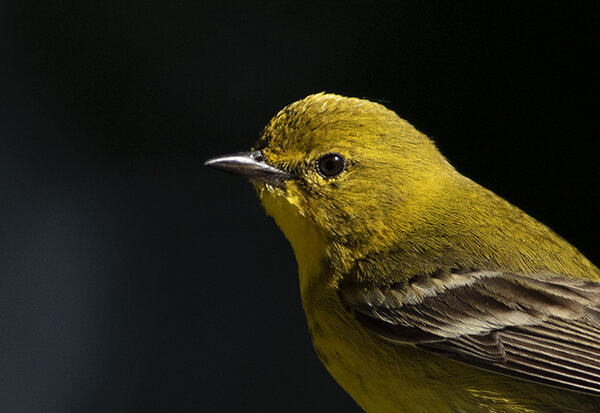
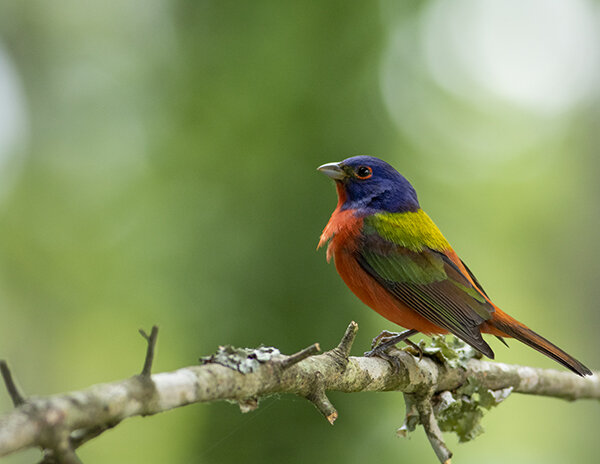
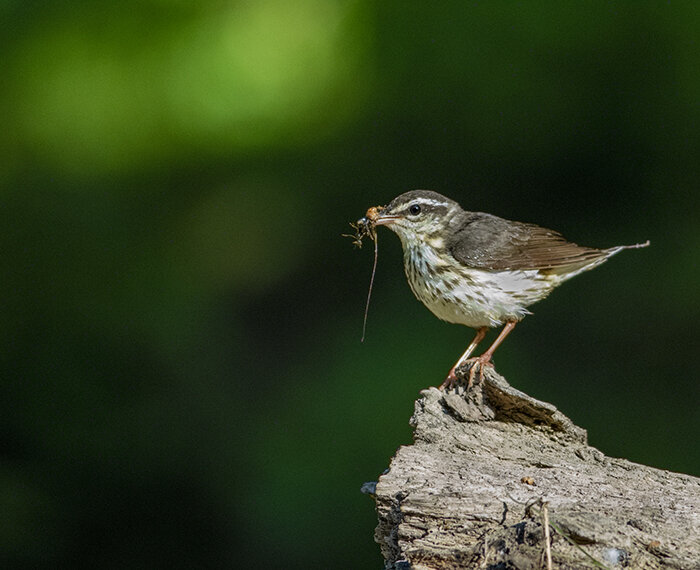
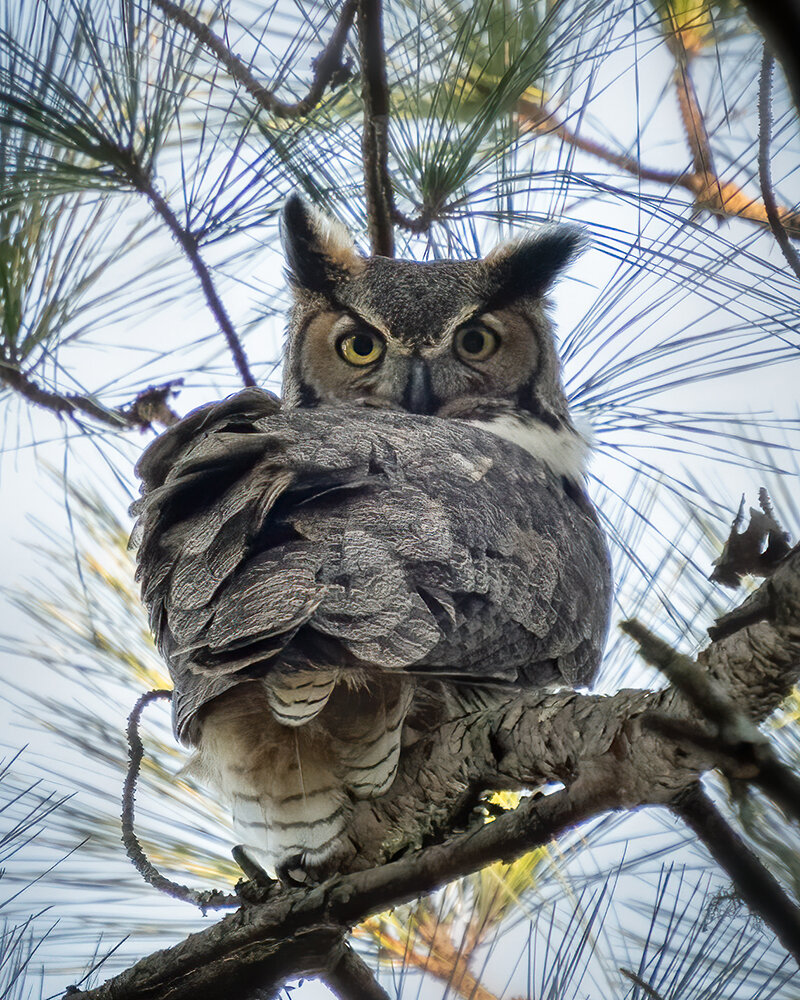
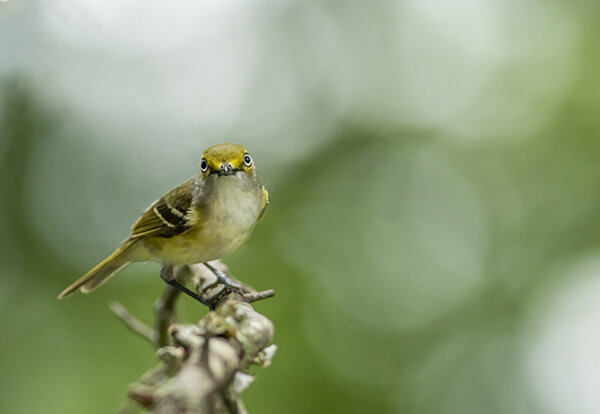
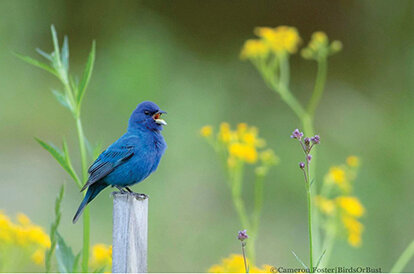
Some birds, like the Brown-headed Nuthatch, Black and White Warbler, and Brown Creeper, meticulously and acrobatically climb up and down tree trunks and branches in search of insects, spiders, and eggs hidden in the bark. Others, like the Ovenbird, with its crescendoing “TEACHER, TEACHER, TEACHER” song, struts and forages more like a chicken, than the actual songbird it is. Even though winter boasts an array of amazing and beautiful birds like the Yellow-bellied Sapsucker and Ruby-crowned Kinglet, spring is the season that brings in the most color and variety, and the heart of spring migration is quickly approaching.
So how can you attract these birds to your yard? Their needs are no different than ours. Food, shelter, and water are necessities for any animal that wishes to survive, and you can easily provide all three for our resident and migratory birds. Many people think the only way to provide bird food is by offering seeds and suet at your feeders. Although this is a nice way to supplement a bird’s diet during the winter months, birds trying to raise a family in the spring and summer months need a more nutritious, fatty, and protein rich food. Even in the winter, a Carolina Chickadee’s diet consists of approximately 50% insects. If your goal is attracting more birds, and more wildlife in general, consider installing native plants, which will support more beneficial insects, aka, bird food. Insects have evolved with our local native plants and have developed the physical adaptations to digest the chemicals components within leaves. A tree doesn’t wish to have its leaves eaten so the chemicals within them are there to protect it. However, through evolution and adaptation, many of our native insects, including the larvae (caterpillars) of moths and butterflies are able to feed upon many of the plants we see in and around our area. Those caterpillars and other insects are packed with the fat and nutrients our birds need to produce strong eggs and raise healthy offspring. Our native oak trees are insect factories, and are hosts to hundreds of different kinds of caterpillars. Among many others, plants like goldenrod, aster, and joe-pye weed also produce plenty of caterpillars by providing the leaves caterpillars have evolved to digest.
A place for birds to raise young is also needed, and creating one is easier than you may think. An easy way to offer a home is to install bird boxes in many locations around your property. Screech Owls, Eastern Bluebirds, Tufted Titmouse, and many other species rely on these nest boxes as many of their natural tree cavities have been removed from the local ecosystem. A place to raise young can also include thickets, hedge rows, and brush piles, all of which are easy to install on one’s property. And finally, birds need water. Those of you lucky enough to live on Lake Murray have no problem with this one, but the solution is easy if you’re like me, and do not live on the shoreline. All that is needed is a bird bath, which can either be elaborate and expensive, or an inexpensive, decent sized, shallow dish. Once these three components are provided your property and garden will become a magnet for many local and migratory bird species.
Roseate Spoonbill composite photo by Vance Solseth
The wild beyond your window is spectacular. My hope is that you explore it, fall in love with it, and protect it. I’d like to wish everyone many safe and exciting outdoor adventures this spring, and I look forward to opening your eyes to all that lives in your wild, wild backyard in future issues. - Jay Keck
“In the end, we will conserve only what we love; we will love only what we understand; and we will understand only what we are taught.”












